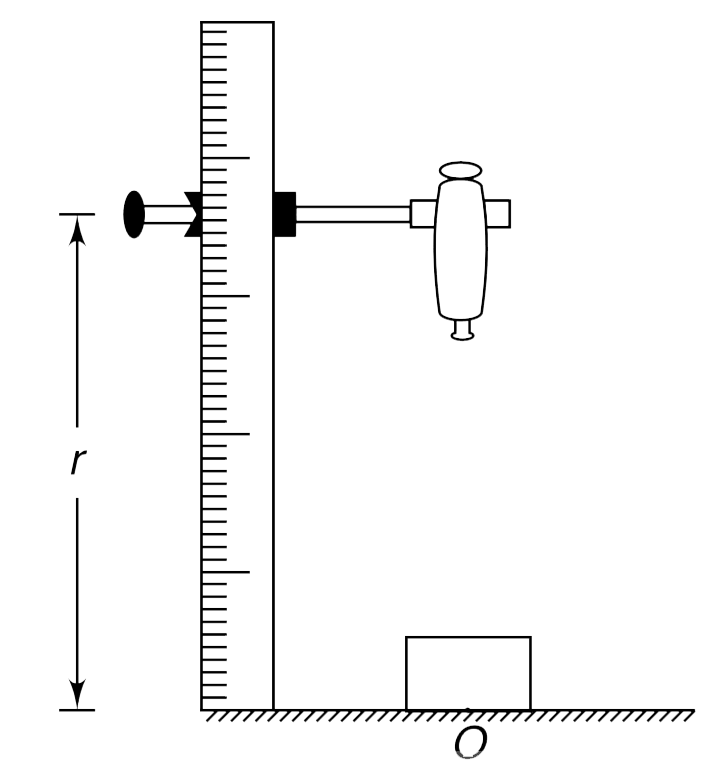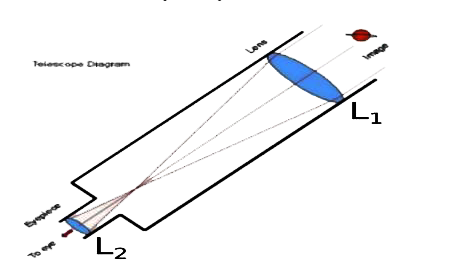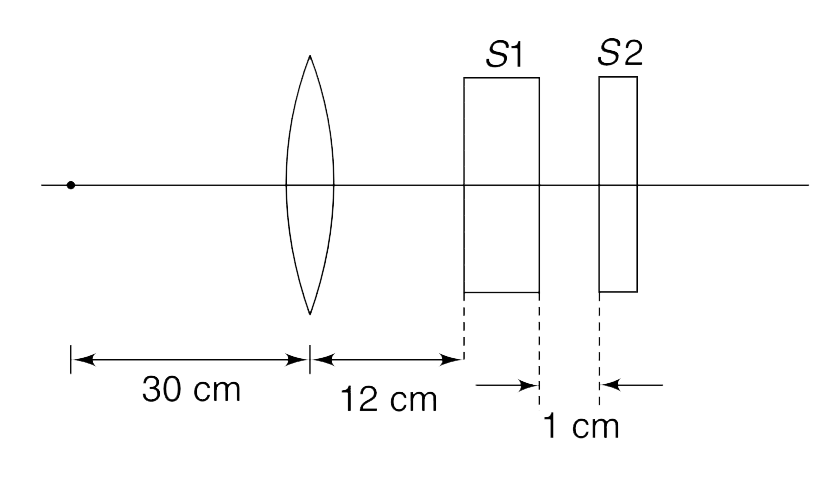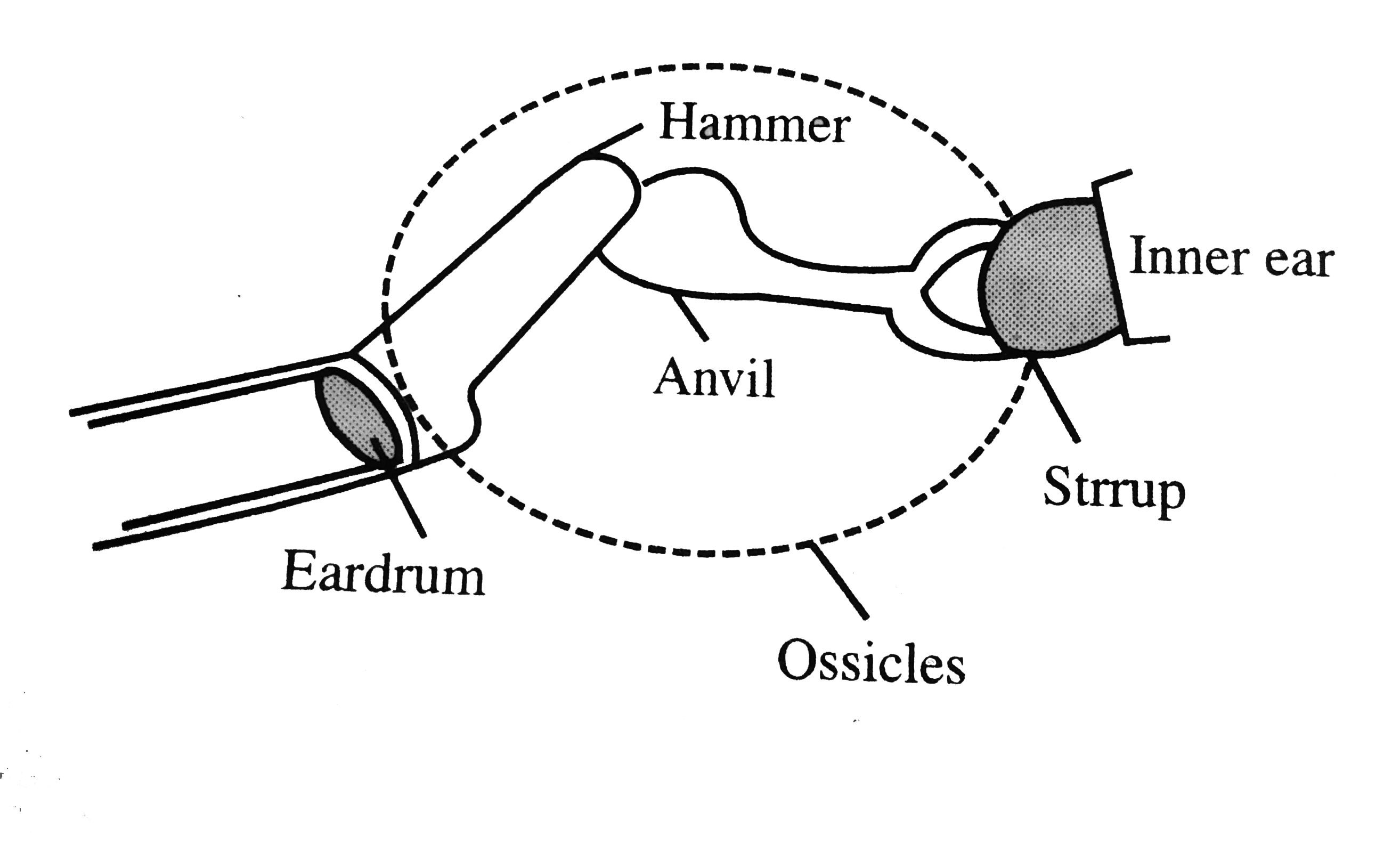A student measures the thickness of a human hair by looking at it through a microscope of magnification 100. He makes 20 observations and findsd that the average width of the hair in the field of view of the microscope is 3.5mm. What is his estimate on the thickness of hair?
Magnification = observed width/real width
observed width= 3.5mm
Magnification =100
real width =3.5100=0.035mm.
Hence, thickness of hair =0.035mm.
Topper's Solved these Questions
- UNITS AND MEASUREMENTBOOK - MODERN PUBLICATIONCHAPTER - UNITS AND MEASUREMENTEXERCISE - NCERT FILE (ADDITIONAL EXERCISES)
9 Videos
- UNITS AND MEASUREMENTBOOK - MODERN PUBLICATIONCHAPTER - UNITS AND MEASUREMENTEXERCISE - NCERT FILE (EXEMPLAR PROBLEMS OBJECTIVE QUESTIONS)
18 Videos
- UNITS AND MEASUREMENTBOOK - MODERN PUBLICATIONCHAPTER - UNITS AND MEASUREMENTEXERCISE - TOUGH AND TRICKY PROBLEMS
6 Videos
- THERMAL PROPERTIES OF MATTERBOOK - MODERN PUBLICATIONCHAPTER - THERMAL PROPERTIES OF MATTEREXERCISE - CHAPTER PRACTICE TEST
15 Videos
- WAVESBOOK - MODERN PUBLICATIONCHAPTER - WAVESEXERCISE - CHAPTER PRACTICE TEST
14 Videos
Similar Questions
A boy measures the thickness of a human hair by looking at it through a microscope of magnification 100x. After 25 observations, the boy finds that the average width of the hair in the field of view of the microscope is 3.8 mm. What is the estimate on the thickness of hair?
View SolutionA glass plate 4 mm thick is viewed from the above through a microscope. The microscope must be lowered 2.58 mm as the operator shifts from viewing the top surface to viewing the bottom surface through the glass. What is the index of refraction of the glass ?
View Solution
Knowledge Check
A student measures the thickness of a human hair by looking at it through a microscope of magnification 100. He makes 20 observations and finds that the average width of the hair in the field of view of the microscope is 3.5 mm. The thickness of hair is
A0.035 mmB0.04 mmC0.35 mmD0.40 mmA travelling microscope can move vertically along a scale. It is focused at a mark O on the table and the reading on the vertical scale isr1. Now a glass slab is placed over mark O and the microscope has to be moved up to bring the mark in focus again. This time the scale reads r2. Lycopodium powder is spread over the top of the glass slab and the microscope is moved up once again to bring the powder particles in sharp focus. This time the vertical scale reads r3. Find the refractive index of the material of the glass slab.
 A15 cmB5cmC30 cmD20 cm
A15 cmB5cmC30 cmD20 cmSumati wanted to see the stars of the night sky. She knows that she needs a telescope to see those distant stars. She finds out that the telescopes, which are made of lenses, are called refracting telescopes and the ones which are made of mirrors are called reflecting telescopes.

So she decided to make a refracting telescope. She bought two lenses, L1 and L2. out of which L1 was bigger and L2 was smaller. The larger lens gathers and bends the light, while the smaller lens magnifies the image. Big, thick lenses are more powerful. So to see far away, she needed a big powerful lens. Unfortunately, she realized that a big lens is very heavy. Heavy lenses are hard to make and difficult to hold in the right place. Also since the light is passing through the lens, the surface of the lens has to be extremely smooth. Any flaws in the lens will change the image. It would be like looking through a dirty window.
Sumati did some preliminary experiment with the lenses and found out that the magnification of the eyepiece (L2) is 3. If in her experiment with L2 she found an image at 24 cm from the lens, at what distance did she put the object?A72 cmB12 cmC8 cmD6 cm
Bunty was fond of painting. He observed that hairs of paint brush do not cling together when dry and even when dipped in water but form a fine tip when taken out of it. He was quite surprised to see it but found it very useful for doing neat and beautiful painting. He asked his elder sister Shanti, who was a science student of class XI, that why do hairs of a paint brush cling together when taken out of water. His elder sister explained him the reason nicely.
(i) What are the values displayed by Bunty here?
(ii) Why do the hairs of a paint brush cling together when taken out of water?\
View Solution_E01_102_Q01.png)
In a YDSE a parallel beam of light of wavelength 6000Å is incident on slits at angle of incidence 30∘. A and B are two thin transparent films each of refractive index 1.5. thickness of A is 20.4μm. Light coming through A and B have intensities I and 4I resepctively on the screen. Intensity at point O which is symmetric relative to the slits is 3I. The central maxima is above O.
(i). what is the maximum thickness of B to do so. Assuming thickness of B to be that found in part (i) answer the following parts.
(ii). Find fringe width, maximum intensity and minimum intensity on screen.
(iii). Dinstance of nearest minima from O
(iv) intensity at 5 cm on either side of O.
View SolutionA small object (A) is placed on the principal axis of an equiconvex lens at a distance of 30 cm. The refractive index of the glass of the lens is 1.5 and its surfaces have radius of curvature R=20cm. Two glass slabs S1 and S2 have been placed behind the lens as shown in Figure. Thickness of the two slabs is 6 cm and 4 cm respectively and their refractive indices are 32 and 2 respectively.
(a) Find the distance of the final image measured from the lens. Also find the magnification.
(b) How does the position of the image change if the slab S2 is moved to left so as to put it in contact with S1.
(c) How does the position of the image change if the two slabs in contact are together moved to right by a distance of 100 cm.

View SolutionRead the passage carefully and answer the questions given below. We started looking on the ground for bloed, hair, or a drag mark that would lead us to the dest killed by the tiger. We had proceeded a hundred yards, esamining every foot of the ground, and guing dead slow, when Mothi, just as I tumed my head to look at him, started backwards, screaming as he did so. Then he whipped round and ran for dear life, beating the air with his hande as if warding off a warm of bees and continuing to acream as he ran. The sudden and piercing scream of a human being in a jungle where a moment before all has been ailent in terrifying to hear. Instinctively i konw what had happened. With his eyes fized on the ground, looking for the blood or hair of the kill, Mothi had failed to see where he was going, and had walked towards the tiger
In the contact of the passage "kill means (a) the act of killing (b) an animal killed by the tiger (c) a human being killed by the tiger (d) a weunded tiger
View Solution
When a sound wave enters the ear, it sets the eardrum into oscillation, which in turn causes oscillation of 3 tiny bones in the middle ear called ossicles. This oscillation is finally transmitted to the fluid filled in inner portion of the ear termed as inner ear, the motion of the fluid disturbs hair cells within the inner ear which transmit nerve impulses to the brain with the information that a sound is present. The theree bones present in the middle ear are named as hammer, anvil and stirrup. Out of these the stirrup is the smallest one and this only connects the middle ear to inner ear as shown in the figure below. The area of stirrup and its extent of connection with the inner ear limits the sensitivity of the human ear consider a person's ear whose moving part of the eardrum has an area of about 50mm2 and the area of stirrup is about 5mm2. The mass of ossicles is negligible. As a result, force exerted by sound wave in air on eardum and ossicles is same as the force exerted by ossicles on the inner ear. Consider a sound wave having maximum pressure fluctuation of 4×10−2Pa from its normal equilibrium pressure value which is equal to 105Pa. Frequency of sound wave in air is 332ms. Velocity of sound wave in fluid (present in inner ear) is 1500ms. Bulk modulus of air is 1.42×105Pa. Bulk modulus of fluid is 2.18×109Pa.
Q. This person (without hearing aid machine) is sitting inside a busy restaurant where average sound intensity is 3.2×10−5Wm2. How much energy in the form of sound is taken up by the person in his meal time of 1 h?
View Solution
